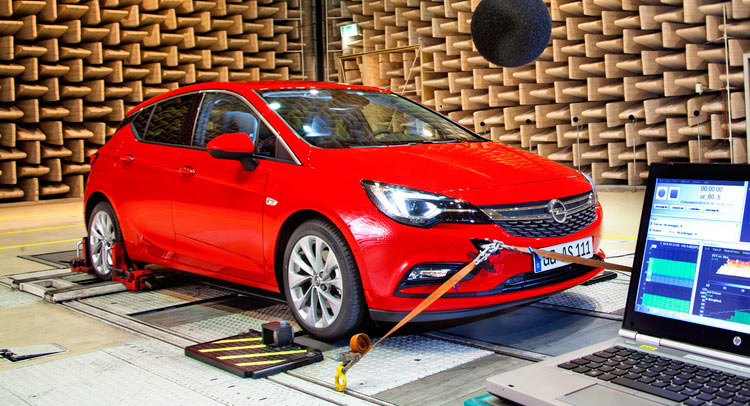Before being ready for production, the new Opel Astra had to be tested in the acoustic lab in order to make sure that the car really did represent a quantum leap in its segment, compared to its predecessor.
This particular test was actually the last one that the new Astra had to pass, after it had already aced its comfort and noise evaluations at the Opel Test Center in Rodgau-Dudenhofen. This lab was the perfect place to find out just how silent the Astra was. The room featured soundproofing on the walls and the ceiling, thanks mainly to noise absorbing materials.
During the tests, the Astra was driven on large floor rollers, producing the same resistance the car would experience in real life conditions from wind and rolling friction.
“This enables driving with road-like loads. It does not depend on the weather and we can test various scenarios under consistent conditions,” said Bernd Justen, Opel’s Vehicle Performance Manager for compact class cars. “Apart from the appropriate sound of the engine or rolling noise, this includes the sound made by closing a door or the clicking of the indicator. We initially check the simulation-based basic settings. Based on this we keep on working until the Astra meets our noise requirements.”
Further tests included idle behavior, Start/Stop system noise and driving partial or full engine load – all captured by the highly sensitive microphones for analysis.
One typical procedure that Opel describes for is the ‘full-load, rev-up’ in third gear, a test that the all-new 1.4-liter ECOTEC turbocharged unit passed with flying colors. Such refinement (for its segment) was achieved through a noise-optimized engine block design, specifically by splitting the oil pan, adding noise protection to the integration of the cylinder head into the exhaust manifold, designing a sound-absorbing cam cover, decoupling the high-pressure injection valves and trimming the timing chain for quiet concentricity.
“Our dummy heads confirm the exemplary noise level,” said Justen while talking about the mannequin-looking figures in the Astra’s cabin. “There are highly sensitive microphones fitted in the ears of dummy heads too. They allow us to record and replay noises in the same way that a ‘real’ human would perceive them.”
By doing these types of tests, Opel managed to differentiate between the upward and downward direction of noise, helping the dummy hear in basically three dimensions.
Also, through so-called binaural measurements, Opel conducted a binaural transfer path analysis and synthesis, achieving a vehicle sound that would be pleasant for occupants. “This allows us to identify and analyze the different sound sources,” explained Justen.
While you could argue that the new Astra isn’t the best looking car in its class or that it should definitely stop trying to upset the luxury class, there’s no denying the fact that Opel went through great lengths making sure they had a potentially segment-conquering car on their hands.









